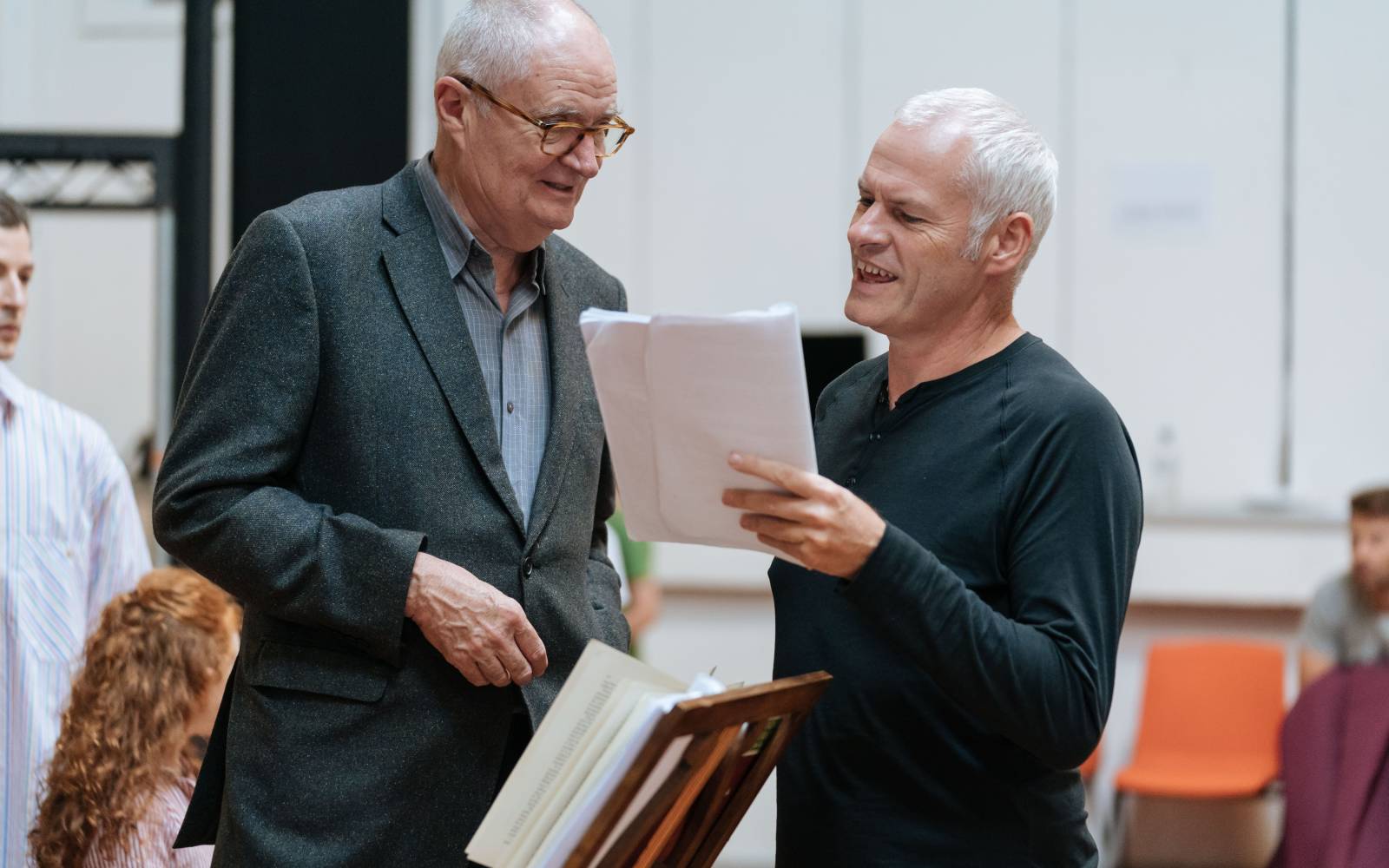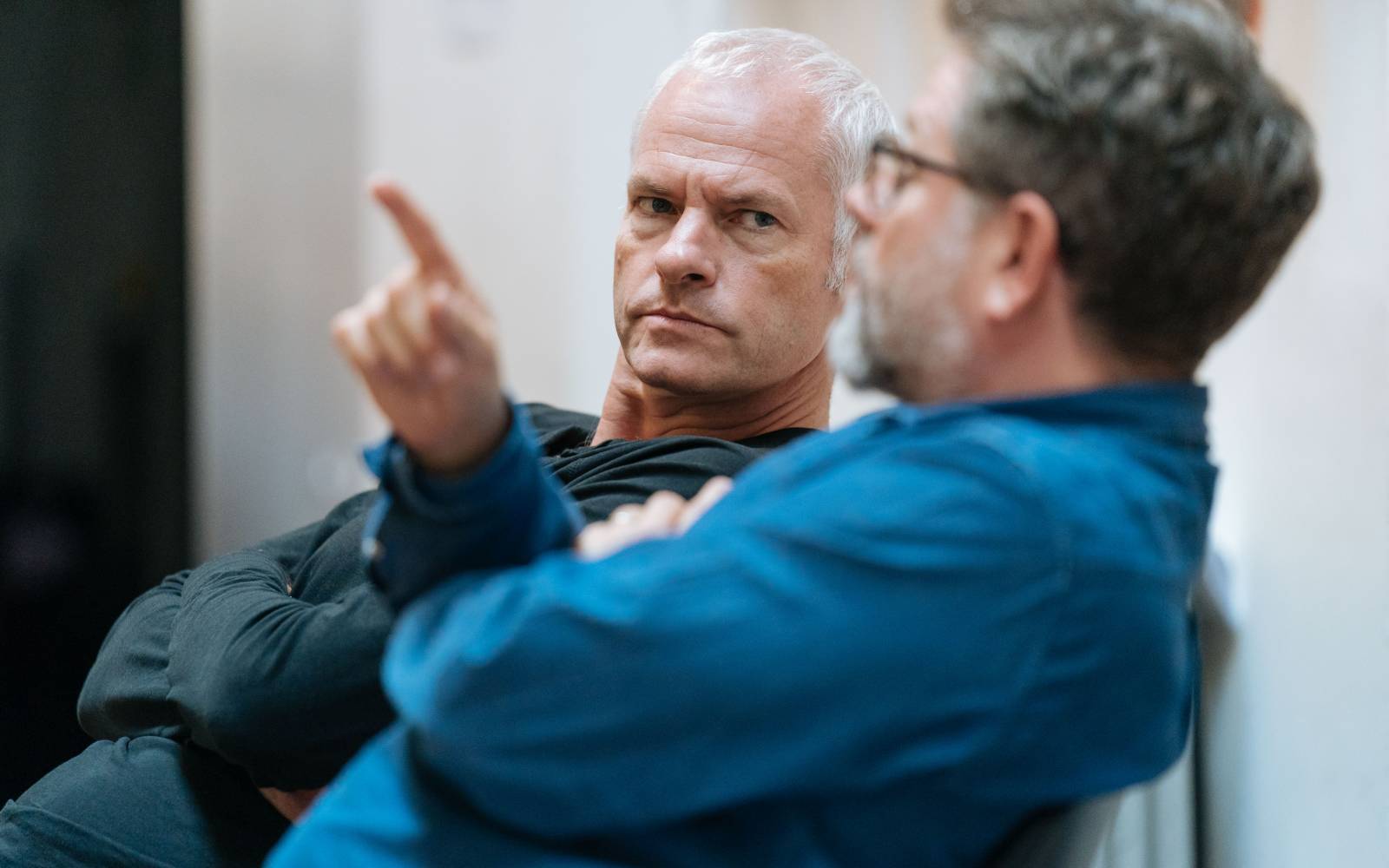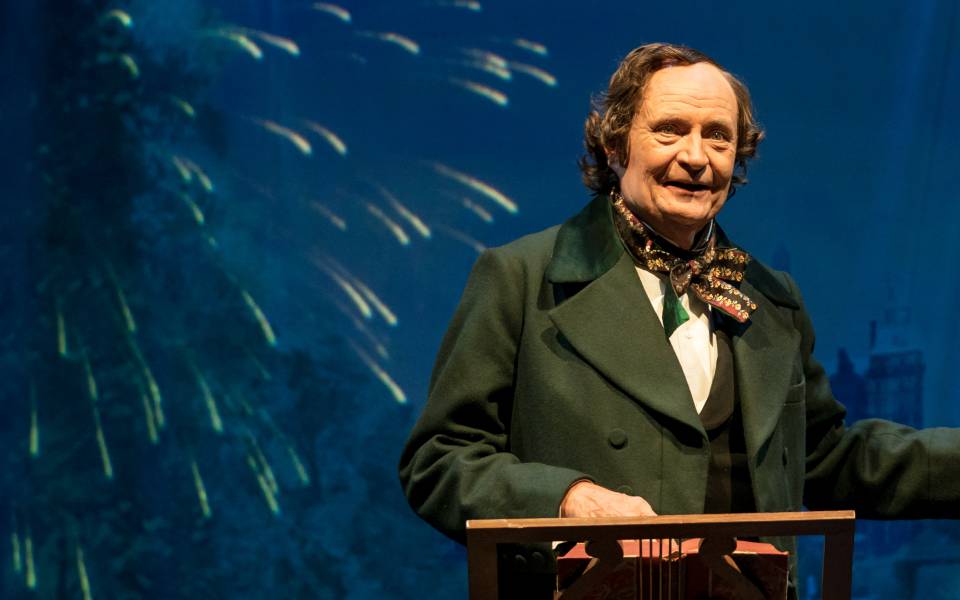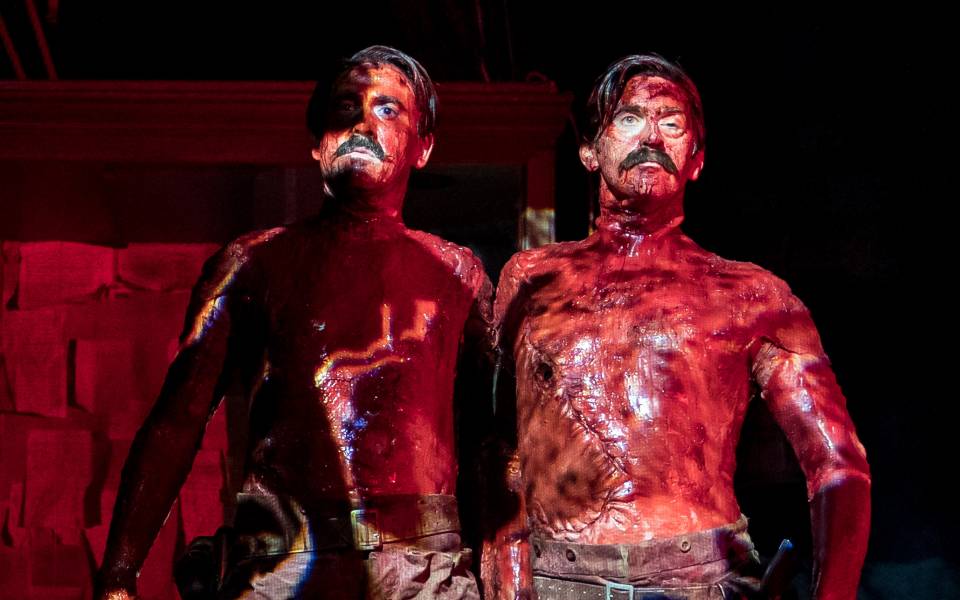
The In-Betweener
Fintan O'Toole
When he was 16, Martin McDonagh told his brother John a story based on an old folktale: A lonely little boy is on a bridge at dusk when a sinister man approaches. The man is driving a cart on the back of which are foul-smelling animal cages. The boy conquers his fear, offers the man some of his supper, and the two sit and talk. Before the man leaves, he says that he wants to give the boy something whose value he may not understand but will soon come to appreciate. The boy accepts. The man takes a meat cleaver from his pocket and chops off the toes of the boy’s right foot. As the man drives away, he tosses the boy’s toes to the rats that have suddenly begun to gather in the gutters of the town, whose name, we now learn, is Hamelin. The man is the Pied Piper, who saves Hamelin from the plague but kidnaps the local children when the town’s elders refuse to compensate him for his efforts. The boy is the only one of Hamelin’s children to survive, because he cannot keep up with the other kids, who follow the Piper out of town.
John liked the story and encouraged Martin to write it down. Many years later, it appears in McDonagh’s play The Pillowman, where the storyteller Katurian adds a further twist: “It’s the children the Pied Piper was after. To begin with. My idea was he brought the rats… He knew the townspeople wouldn’t pay.” In this vignette, we can see a story ramifying, from an old German tale recorded by the Brothers Grimm, to a London-Irish kid beginning to write in a flat in a tower block in Camberwell, to the theatres around the world where The Pillowman has been staged.
And there is something deeply unsettling in the way this happens to a story. On the one hand, it is pure invention. “The only duty of a storyteller”, says Katurian, “is to tell a story”. This impulse is creative, imaginative, ludic. But it is also, on the other hand, terrifying. Stories take on their own lives. They generate and regenerate, multiply and proliferate, as if they are outside of our control, as if it is not we who tell them but they who tell us. And in this wild proliferation, there is a gravitation towards the grotesque. A dark story will become a very dark story and eventually a very, very, very dark story.
In this sense, a story hovers between the delight of creation and the dread of the uncontrolled thought. We say to children who have scared themselves in the night: It is only your imagination. As if the imagination is ever only anything. We know that it is always in-between, always hovering, neither here nor there, capable of going any which way. A story can plunge us into terror and then lead us back out into relief and happiness. Or it can amble along nicely before slipping away into the abyss. Stories are innately treacherous: somebody can always come along and change the ending.

After he wrote that first Pied Piper story, Martin McDonagh continued to write short, grotesque tales – by the time he was 22 in 1992, he had about 150 of them. In a sense, he has never stopped. Left alone in that flat in Camberwell when his parents retired and returned to Ireland and John moved to California to study screenwriting, he produced perhaps the most remarkable burst of creativity in the modern theatre. In 1994, he drafted seven plays: the Leenane trilogy, including The Beauty Queen of Leenane; the Aran Island trilogy, including The Cripple of Inishmaan and The Lieutenant of Inishmore; and The Pillowman.
Those plays were startling for their brilliant stagecraft, baroque language and savage humour. But they were also remarkable for dragging the theatre back to its primitive roots in storytelling. For all their strangeness they were driven by the most basic of questions: what will happen next? The answer is generally something violent, lurid, outlandish, transgressive. “I like doomed cripples in stories who die”, says Marjory in A Very Very Very Dark Matter, which, as well as being a dismissal of Charles Dickens’s Tiny Tim, is a joke on the author of The Cripple of Inishmaan. McDonagh’s plays and films are full of doom, dismemberment and death. Even a play like The Beauty Queen, which is founded on a keenly observed social reality and uses the conventions of the naturalistic play, is actually a lot closer to Grand Guignol than it is to Ibsen.
In part, of course, this is very Irish. McDonagh clearly belongs to the Irish Gothic tradition of Sheridan Le Fanu’s ghost and vampire stories, Bram Stoker’s Dracula and Oscar Wilde’s The Picture of Dorian Grey, a tradition that fed into the theatre through the work of John Millington Synge and Samuel Beckett. But it is also in his case very London-Irish. The Irish Gothic writers lived between two worlds – they were Protestants in a Catholic society. McDonagh, too, grew up between two worlds: on the one hand the rural, Catholic and Irish culture of his parents and grandparents, on the other the working-class London of punk and edginess and transgression.
This condition of exile is like a story – it can go anywhere or nowhere. In a poignant speech in The Beauty Queen, Pato Dooley, a Connemara man working in building sites in England, confesses that “when it’s there I am, it’s here I wish I was of course. Who wouldn’t? But when it’s here I am… it isn’t there I want to be, of course not. But I know it isn’t here I want to be either.” This is the condition of hovering between worlds. In many people’s lives it can be almost paralysing. In the life of an imaginative writer like McDonagh, it is enormously productive. It is the condition that both draws him towards the grotesque and makes him, in spite of his misgivings, go on being a playwright.

At the simplest level, it is striking that McDonagh can move in his work between Ireland, England and the US, travelling from Connemara to Ebbing, Missouri, via Oldham, where Hangmen is set. These are not just places but languages: he slips confidently between idioms and dialects, so much so that he seems a master of linguistic disguise, hiding his own voice in a discordant chorus of other accents. Being neither here nor there gives him an extraordinary fluidity.
More importantly, though, being unanchored makes him at once deeply conscious of boundaries and relentlessly determined to cross them. Outlandish stories are all about testing where the boundaries might be or whether they exist at all – boundaries between the real and the fantastic, between comedy and terror, between the speakable and the unspeakable. McDonagh follows his stories where he thinks they want to go, even if the places they want to occupy are often profoundly uncomfortable ones.
But one of the places they have to occupy is the theatre. “I always thought theatre was the least interesting of the art forms,” he told me when I first met him, in 1997. “I’d much rather sit at home and watch a good TV play or series than go to the theatre.” He has periodically announced his intention to write no more plays. And of course he doesn’t have to – his success as a filmmaker means that he has whatever opportunities he wants to take up in a medium with which he has always claimed to feel the closest affinity.
And yet he can’t leave the theatre because it is the one place that is neither here nor there. There is no art form so real on the one hand and so patently artificial on the other, none in which the audience is both so powerfully drawn in to the action and so obviously excluded from it. Theatre is all flesh and physicality and presence and also all show and gesture and convention. For a writer whose gift is to keep spinning us around until we ourselves don’t know whether we are here or there, it remains the place to be. The impulse of a McDonagh play is to take us to a point where we are simultaneously shocked by the lurid words and actions, reminded that these are “only” stories and forced to laugh at the contradictions between these two states of mind. That can’t happen in the movies.
A Very Very Very Dark Matter suggests, moreover, that this need is becoming all the greater. The Irish Gothic tradition has always been about the sublimation of very real horrors into imaginary terrors. With this play, McDonagh is more deeply rooted in that tradition than he has ever been. Its wild, protean, extravagant exploration of the dark places where stories come from is full of the most outrageous fancy. But it is also full of an even more outrageous reality: the genocidal oppression of the people of the Congo. That reality was first fully exposed by another Irish writer, Roger Casement, who was himself later hanged for high treason in London. What happened is always darker than we can imagine.
Fintan O’Toole, October 2018
Fintan O’Toole is a columnist with The Irish Times. He teaches at Princeton University, USA, and his most recent book is Judging Shaw.
This article was originally published in the production‘s programme.
Photos by Manuel Harlan.
Further reading

By the Virtue of the Dark
Marina Warner
During the long nights of the North before electricity, darkness gathered in the forests and below the blind black surface of the fjords; but beyond observable reality, another kind of night reached deep down in the depths, where monsters…
More →
The Unfree Free State: An Overview of the History of the Congo
Mpalive-Hangson Msiska
One gets a better a sense of the Congo when the territory is seen in terms of its historical formation. Arguably, one of the most determining events for modern Congo was the late 19th-century founding of the Congo Free State by Belgium’s King…
More →